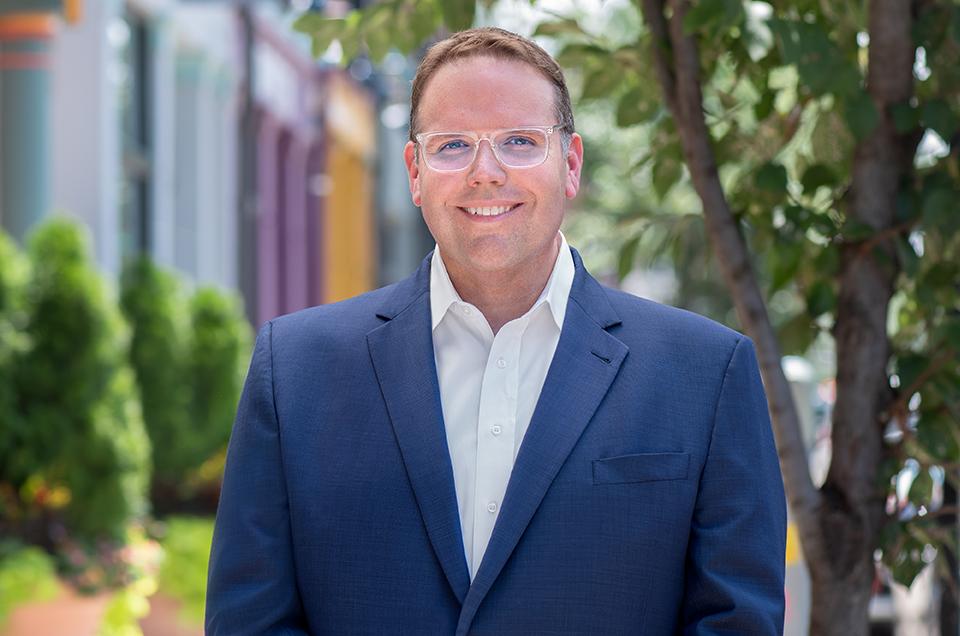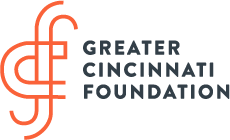A Conversation with Matthew Randazzo
As the year draws to a close, we sit down with Matthew Randazzo, President and CEO at Greater Cincinnati Foundation (GCF), to discuss his first six months on the job, opportunities for growing impact in the region and what he’s looking forward to in 2024.
You are several months into your role here at GCF. What has that experience
been like so far?
It’s been a remarkably warm welcome from the staff at GCF and the community more broadly. I have been on a really intentional learning tour to better understand the community and the opportunities here. I’ve also been intentional in learning about the passions of our donors and collectively, where we can make the biggest impact.
What is unique about your work at GCF that’s different from other leadership roles you’ve held?
I talk about this a lot, but it’s true! The Board at GCF is among the strongest and most committed Board with whom I’ve ever worked. They represent the full passions and interests of our region and are deeply invested in every sector of this region. The members are wildly rigorous in their service to our Board because they know that helps drive better outcomes for the community.
It’s easy for community foundations to get caught up in “nonprofit speak.” In plain language, how would you describe the work of GCF?
Quite simply, GCF’s work is to walk alongside our donors and activate their generosity. Our nonprofit partners are doing day-to-day work. Our job is to channel the resources they need to make this a vibrant, opportunity-rich region.
You’ve talked frequently about the need to listen before you act. Now that you’ve had a few months to hear from staff, donors and community members, can you share a lesson or two that you’ve learned?
I think intentionality around learning is essential for someone who’s new to an organization, new to a role, and new to town. These last five months I have been on a voracious learning tour.
The two topline learnings are:
- We have to do better at walking alongside our donors and activating their generosity around issues and causes they care about. GCF is a respected leader, and our impact portfolio will continue to focus our efforts on economic mobility, racial equity and affordable housing. At the same time, our donor’s interests are as broad as this community. We really need to help support their work for health and human services, arts and culture, green space, education and more.
- This truly is a town that punches above its weight because there is seemingly 1° of separation between so many individuals and institutions. And for me that creates this remarkable opportunity for GCF to step into a community-wide quarterback role.
We will help stitch together the intellectual, philanthropic and social capital necessary to create sustainable change, even beyond our own community impact initiatives. We are seen as a trusted partner and convener. The feedback has been very consistent, whether it’s from institutional funding partners, donor advised fund holders, nonprofit leaders and community civic leadership – they’re all hungry for us to do this work.
The needs of our community are great. Can you talk about specific opportunity areas that GCF can really lean into to make an impact on our region?
I think we need to double down on our impact investing work. It’s one of the things that differentiates us the most and where we’ve had a remarkable amount of success. In particular, we’ve made strides in job creation and affordable housing. To date, GCF through impact investing, has helped create and/or retain over 1,765 new jobs and 1,772 affordable housing rental units. However, high-quality living-wage jobs and affordable housing are still dire needs in our community. We will put a lot of effort into building out the impact investing portfolio.
Another opportunity that exists in our region is to rally around education from the earliest days of learning. High-quality childcare that leads to high-quality pre-K and prepares kids for success by third grade. This is an interest area for many of our donors and civic leaders and I think there’s a real opportunity to continue aligning resources and support from the earliest years through high school graduation, to bridge people to college, careers, etc.
What does growth look like for GCF and why is it necessary?
I like to use the adage, “We have to have a solution that matches the size of the challenge we face.” The more this institution grows, the more resources we’re able to put into the community to drive measured and sustained community impact. In the years ahead, we’ll see an intentional focus for GCF to grow not just our assets under management, but also assets under influence. And we do need to attract more fundholders. In a typical year, close to ¾ of what we raise goes directly to the community. So, if we raise more funds, that means more money goes to the community to support nonprofits on the issues and causes we all care about.
What are you most excited about for GCF in 2024?
We will have a newly seated, fully staffed leadership team by the first week of January. I’m excited by the potential for GCF to partner hand in glove with our staff, the Governing Board and our community partners to develop a business and strategic plan that provides a clear and transparent road map about the work that we’re going to undertake in the community.

